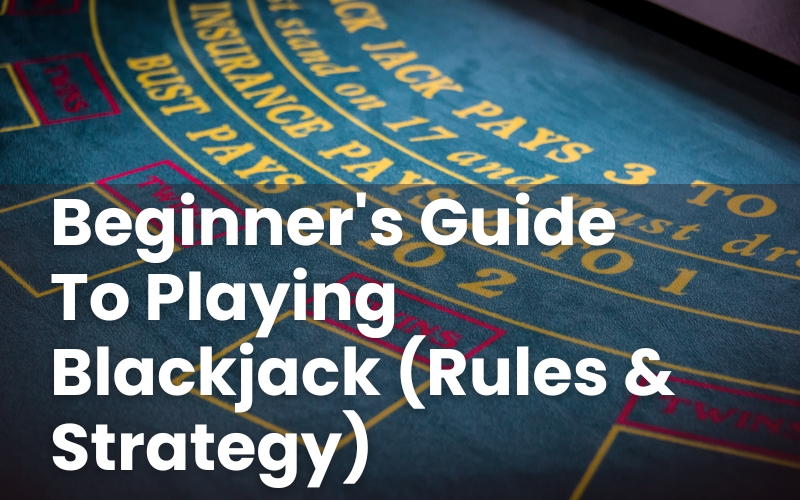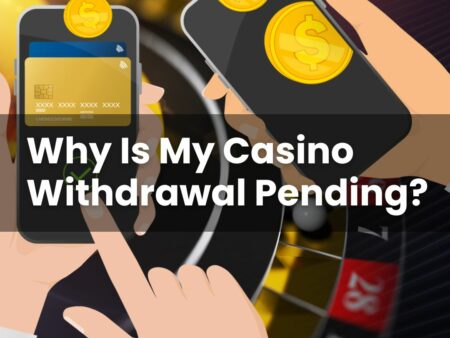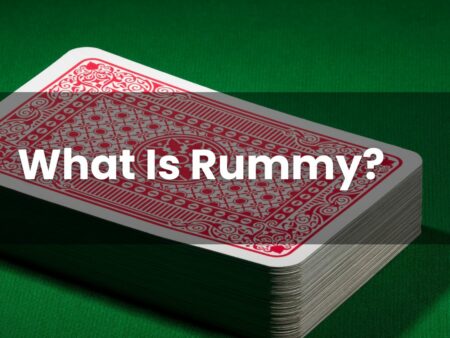

Ever stood by the blackjack table and felt intrigued to learn the game?
This Chief Gambler guide is here to walk you through the basics of playing blackjack. Understanding the fundamentals is essential before you place your chips on the table.
In this blog post, you’ll explore how the game works, uncover rules, and dive into basic strategies. Blackjack is one of the most popular card games at casinos, featuring an entertaining mix of chance and player decisions.
While there are strategies to consider, remember that any potential winnings involve an element of chance. Let’s explore blackjack’s world and uncover tips to help you start your journey.
What Is Blackjack?
Blackjack is a popular card game that you can find in many casinos across the UK. It presents a fun way to test your skill and decision-making abilities. The game is also known by some as “21”, due to its objective of trying to hit a hand value as close to 21 as possible, without going over.
You play against the dealer, and each round starts with you receiving two cards. The dealer also receives two cards, with one face up and one face down. The value of your cards determines whether you choose to draw more cards, or stick with your current hand.
Blackjack uses a standard deck of 52 cards. Each card has a value: number cards are worth their face value, face cards (kings, queens, and jacks) are worth 10, and aces can be worth either 1 or 11, depending on what may benefit your hand most.
While learning the basic rules and strategies can enhance your understanding, remember it involves an element of chance, and any potential winnings are not guaranteed.
Is Blackjack The Same as 21?
Yes, blackjack is often referred to as “21”. Both terms refer to the same game with identical objectives and rules. The name “21” originates from the main goal of trying to reach a hand value as near to 21 as possible.
The name variations depend on personal preference and geographical region. However, the gameplay stays consistent, ensuring you’ll be familiar with the core principles no matter which name is used. Both terms are interchangeably used within the casino world, making them synonymous in meaning.
How To Play Blackjack
To start playing blackjack, you’ll place a bet on the table using casino chips. How much you choose to wager is entirely up to you. Each player at the table receives two cards face up, while the dealer gets one card face up and one face down.
The aim is to have a hand value closer to 21 than the dealer’s hand. However, if your hand value exceeds 21, you’ll “bust” and lose your bet.
Once the cards are dealt, you decide your next move. You can “hit” to take another card, or “stand” to keep your current hand. The decision depends on the value of your cards and the dealer’s visible card.
If you’re dealt two identical cards, like two eights, you can “split” them into two separate hands. This requires an additional bet equal to your original wager. Splitting gives you more opportunities to try and reach a better hand total.
Another option is “doubling down”. This involves doubling your bet in exchange for one additional card. It’s often done when you think one more card may significantly increase your chances of winning.
After each player has taken their turns, the dealer reveals their face-down card. The dealer follows specific rules, usually hitting until reaching a total of 17 or more. If your hand value is closer to 21 than the dealer’s, you win.
Blackjack Rules Explained
Blackjack is a classic casino game with straightforward rules. Your goal is to try and achieve a hand value closer to 21 than the dealer, without exceeding 21. Each round starts with players placing their bets.
You’ll be dealt two cards initially. As you assess your hand, you have a few choices. You can “hit” to receive another card, or “stand” to keep your hand as is. The game’s simplicity often makes it an attractive choice for beginners.
There are different variations of blackjack, such as European or Atlantic City Blackjack. These variants may have unique rules and betting options. Always check specific game rules at the casino or online platform you’re using. Usually, there are game guides or help sections available that can offer more detailed information.
Consistently, blackjack remains a game of both chance and decision-making. Understanding the basic rules can help you enjoy the game, while making informed choices throughout play.
Blackjack Dealer Rules
The dealer in blackjack follows strict rules, which means their decisions are consistent and predictable. Unlike players, the dealer has no choice in their actions.
Typically, the dealer must continue drawing cards until reaching a hand total of 17 or more. This is commonly known as the “hit on 16, stand on 17” rule. Once the dealer reaches 17, they stop drawing cards.
In some game variations, if the dealer has a “soft 17” (a hand including an ace counted as 11), they might need to draw another card. Reading the house rules can help clarify these conditions before you play.
Blackjack Side Bets
When playing blackjack, you may come across the option to place side bets. Side bets are additional wagers that can be made alongside your main bet. They add another layer to the game by providing extra betting possibilities.
One common side bet is “Perfect Pairs”. This bet is based on your first two cards forming a pair, like two queens. The payout can vary depending on whether the pair is mixed, coloured, or perfect.
Another popular option is “21+3”. This combines your first two cards with the dealer’s face-up card, aiming for poker-style hands, such as three of a kind or a straight. Each combination has different odds and potential payouts.
Casino rules often dictate the availability and payout of side bets, so these can differ depending on where you play. It may be useful to familiarise yourself with the specific side bets on offer and their potential rewards before deciding to participate.
Side bets can potentially enhance your experience by providing diversification in your betting approach. Yet, it’s good to keep in mind they do not affect the main game’s outcome. As with all forms of gambling, consider both the potential risks and rewards involved.
Soft & Hard Hands
In the game of blackjack, you’ll often hear the terms “soft hand” and “hard hand”. These terms refer to how flexible your hand is regarding the ace’s value.
A soft hand includes an ace valued as either 1 or 11 without risking going over 21. This gives you flexibility since the ace can adjust based on your subsequent cards. For example, if you’re dealt an ace and a six, you have a “soft 17”. If you opt for another card and it’s a five, your ace can shift to 1, keeping your total under 21.
In contrast, a hard hand contains an ace valued strictly as 1 or no ace at all. This can make decision-making a bit tighter since your hand cannot adjust in the same way a soft hand does. For example, if you have a ten and a seven, you hold a “hard 17”. Any additional high cards could potentially lead to busting your hand.
Basic Blackjack Terminology
As you venture into playing blackjack, it can be useful to familiarise yourself with some key terms. Here’s a quick guide to help you understand the language of the game.
Hit
“Hit” means you wish to take another card from the dealer. This can increase your hand value, but there’s a risk of exceeding 21, which would mean losing your bet or “busting”.
Stand
When you “stand”, you decide not to take any more cards. You are satisfied with your current hand value and don’t want to alter it any further.
Double Down
“Double down” allows you to double your initial bet in exchange for one more card. It’s typically used when you feel confident that one additional card may improve your hand to a strong position.
Split
If you’re dealt two cards of the same value, you can choose to “split” them into two separate hands. You’ll need to place an additional bet equal to your original wager. Each new hand can be played separately.
Surrender
“Surrender” permits you to forfeit half your bet and fold your hand early in the round. This is used when you believe your chances of winning the hand are low.
Push
A “push” occurs when both you and the dealer have hands of equal value. In this situation, your bet is returned, and neither you nor the dealer wins.
Even Money
“Even money” applies when you have a natural blackjack, and the dealer’s face-up card is an ace. The option lets you take a 1:1 payout before the dealer checks for blackjack, providing a way to secure a payout if the dealer also has blackjack.
Familiarising yourself with these terms makes it simpler to understand the flow of the game and the choices available to you.
However, as there are many different variations of blackjack, all of the above might not always be offered. So, you may want to read the game rules before placing any bets.
Is Blackjack Skill or Luck?
Blackjack stands out among other casino games as it combines elements of both skill and luck. Each round begins with cards dealt randomly, which introduces an element of unpredictability. The outcome can depend on which cards are drawn, and this aspect cannot be influenced.
However, as a player, you also make strategic decisions. You decide whether to take another card, stick with your current hand, or utilise options like splitting or doubling down. These choices can impact the game, offering a strategic dimension that distinguishes blackjack from games purely based on chance.
Basic strategy is one approach many players use to help inform their decisions. It involves a set of rules guiding when to hit, stand, or take other actions based on probabilities. Understanding house rules also plays a part in shaping your approach.
Yet even the best strategy can’t dictate the outcome, as card dealing remains a random process. Enjoying the mix of chance with practical decisions is part of what makes blackjack so appealing to many.
Blackjack Strategies Explained
Blackjack is more than a game of chance; strategic thinking plays a significant role. Understanding and implementing strategies can influence how you play your hand against the dealer’s.
Basic Blackjack Strategy
The basic blackjack strategy is a guide based on the mathematical probabilities of the game. It offers a set of moves like when to “hit”, “stand”, “split”, or “double down” based on your hand and the dealer’s visible card.
For example, if the dealer has a card with a value between 2 and 6, and your hand totals 12 to 16, the strategy suggests standing. This may improve your chances, as the dealer has a higher chance of busting. Familiarising yourself with a basic strategy chart can help you make more informed decisions.
Perfect Blackjack Strategy
The term “perfect blackjack strategy” typically refers to playing decisions that minimise the house edge as much as possible. This involves adhering strictly to the basic strategy, while also considering card counting to determine when the deck is in your favour.
Card counting is a more advanced approach that involves keeping track of the ratio of high cards to low cards remaining in the deck. However, be aware that casinos do not favour card counting and may take measures to counteract it. It requires practice and won’t guarantee any winnings, as blackjack outcomes remain uncertain.
Exploring these strategies can help to enhance your understanding of the game, regardless of experience level.
FAQs
Do Casinos Allow Blackjack Strategy Cards?
In many UK casinos, you’re allowed to use blackjack strategy cards while playing. These cards offer guidance on the best moves to make based on your hand and the dealer’s visible card. However, it may be a good idea to check with the casino staff beforehand, as house rules can vary. Strategy cards can be a helpful tool in learning the game, though the outcome will still depend partly on chance.
Is Online Blackjack Rigged?
Online blackjack at reputable UK casinos is subject to strict regulations and oversight. Licensed operators use Random Number Generators (RNGs) to ensure fair play, which are regularly tested by independent authorities. Choosing a trustworthy online casino with proper licensing ensures you’re participating in a fair game. Any fears of the game being rigged can often be mitigated by checking the casino’s credentials and customer reviews.
Can You Count Cards In Online Blackjack?
Card counting is a strategy used to try and predict the next cards. This technique is difficult in online blackjack, due to automatic shuffling after each hand, or use of multiple decks. Counting cards works best in physical settings against a single deck, but casinos may not welcome this strategy. It might lead to you being asked to stop playing, as it can give you an advantage over the house. Online, the nature of digital shuffles generally nullifies traditional card counting methods.









